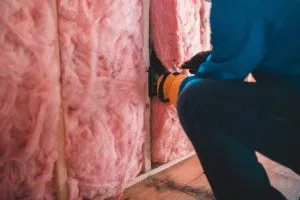Can I Move My Furnace?
Money, time, or energy. Everybody is trying to save something. If you’re trying to save space, then you might wonder if you can move your furnace to the attic. Furnaces are large pieces of equipment, and it could take up a closet, garage, or corner of your basement that you could use for something else.
In this post we’ll answer the question, “can you move your furnace to the attic?” We’ll also tell you if it’s recommended and what to be aware of.
Short Answer
The short answer is – yes, you can move a furnace to the attic. HVAC companies have been installing furnaces in attics for decades. You’ll find quite a few attic furnaces in states where basements are uncommon, like California. If your attic has space and good insulation, then you should be able to find a contractor who will move your furnace.
Of course, there is more to it than just that. Moving your furnace to the attic is an option you have, but it might not be the right option for you.
Considerations
There are some things you need to consider before having your furnace moved. These considerations will determine if moving your furnace into your attic is a real possibility for you.
Insulation
The first is the insulation in your attic. Having a well-insulated and conditioned attic is important. If the attic is unconditioned, then your furnace will have some severe energy efficiency problems.
A furnace has to work to change the temperature in your home. You don’t want it to work harder because it’s losing heat to the surrounding air.

Building Codes
There are several national and state building codes that need to be adhered to when installing or moving a furnace. These are important because they protect your home from potential damage. You’ll have to make sure that your attic has the right clearance and access to be compliant.
Some of those codes vary state by state. Your HVAC Sales Professional will tell you what those codes are and if your attic will work.
Cost
If you are considering moving your furnace to the attic, then you are probably prepared for the associated cost. If you were not already aware, the cost of moving your furnace can be substantial. Quotes in our market will start between $2,000 and $5,000 and go up from there. This just covers the cost of moving the electrical, ductwork, and gas line. The cost will go up if you have to replace any old equipment.
If you have not already, take the cost of transferring your existing system into consideration.
Pros
Now that we know you can put move a furnace into the attic and what we need to consider, we’ll go over some benefits of moving your furnace.
Those benefits include:
- Saves Space
- More Even Heating
- Cheaper Installation
- Lower Flood Damage Risk
Free Up Space
This is the most obvious benefit. You are going to clear up a good amount of space. If you have a furnace in a closet, that closet may be entirely unusable with it in there. By moving your furnace out, you’ll regain use of that closet.
If you need space in your basement or garage for an addition or a new project, then moving the furnace may give you that space.
Just keep in mind that if you are storing items in your attic, you will need to have space for them elsewhere, otherwise you’ll run into the same problem in a different location.

Top-Down Heating
Something that may surprise you, is that you might get more even heating in your home. If a performance-based HVAC contractor efficiently designed and installed your HVAC system, then you should find that the furnace heats all your rooms more evenly.
The furnace forces the hot air to the bottom floors before it rises. This will cause move even heating than if it were just to rise naturally, like from a basement furnace.
Easier to Install
This is a benefit that you will only experience on a new install. If you’re moving an existing furnace with a few conversions to the ductwork, then you will add to the cost of the initial installation.
Installing a new HVAC system with the furnace in the attic can make the duct work easier to install.
That means the installers might have an easier job and you’ll have a less expensive installation. There have been cases where the quote is up to $1000 less than an installation in a garage or basement for a large home.
Low Flood Risk
This is another obvious one. Higher placed furnaces are less likely to be damaged by flooding. If you live in an area with frequent flooding, this may be an excellent solution for you. That way, you have one less thing to worry about if your basement floods.
Cons
There are some downsides to moving your furnace to your attic as well. Some of these problems can affect the cost of operating and maintaining your furnace.
The potential issues are:
- Not As Easy to Service
- Increased Chance of Duct Problems
- Hard To Detect Problems
- Efficiency Loss
Out Of Reach
Unless you have a spacious attic, it will not be as easy to move around the furnace. Typically, basement, garage, or closet installations offer a technician a decent amount of room to work on your furnace.
It’s possible for an attic to have enough space to be code compliant for the installation, but still be a tight squeeze for future maintenance. However, most installers know this and face the furnace to make it more easily accessible.
Out Of Sight
Having a furnace installed in the attic can actually reduce the amount of noise that it makes in your home. That can be an issue, as it becomes harder to hear when something goes wrong. It’ll be harder to detect an issue until it’s too late and you realize you’re no longer getting air flow.
Pinhole Leaks and Duct Problems
Another downside of having your furnace installed in your attic is that there is a slightly higher chance of duct problems. Pinhole leaks and similar issues with the ductwork are more common with attic furnaces than basement or garage furnaces.

Efficiency Problems
Another problem that you might run into after moving your furnace to the attic is a drop in efficiency. This is a problem that is going to happen naturally.
Hot air rises, and cold air falls. An attic furnace forces hot air to the bottom floor first. That means it is going to use more energy to force that heat down.
This problem gets compounded by a poorly insulated or unconditioned attic. If that’s the case, then you’ll be losing a lot of heat in the ambient air.
It’s not recommended to install a high efficiency furnace in the attic because it loses a lot of its benefits just from its placement.
Take Away: What Works Best for You
There are pros and cons to moving your furnace to the attic. The insulation of your home, the location you live in, and the severity of the weather can all affect the performance of an attic furnace.
To know if moving your furnace to the attic would be worthwhile for you, you’ll need to contact your local HVAC sales professional. They’ll know the state codes to see if your attic would work. They’ll also be able to tell you if it’ll be less expensive to install your system in the attic, or if you’ll lose too much efficiency and end up spending more money than necessary.
Who Are Advantage Heating and Air Conditioning?
We are your local HVAC Experts out of Salem, Oregon. We hope that this post gave you the information you need to know if an attic furnace is right for you. If you have other questions about HVAC systems, check out our other blogs. To learn more about who we are and how we can help you, visit our website and follow us on social media – we’re here when you need us!







